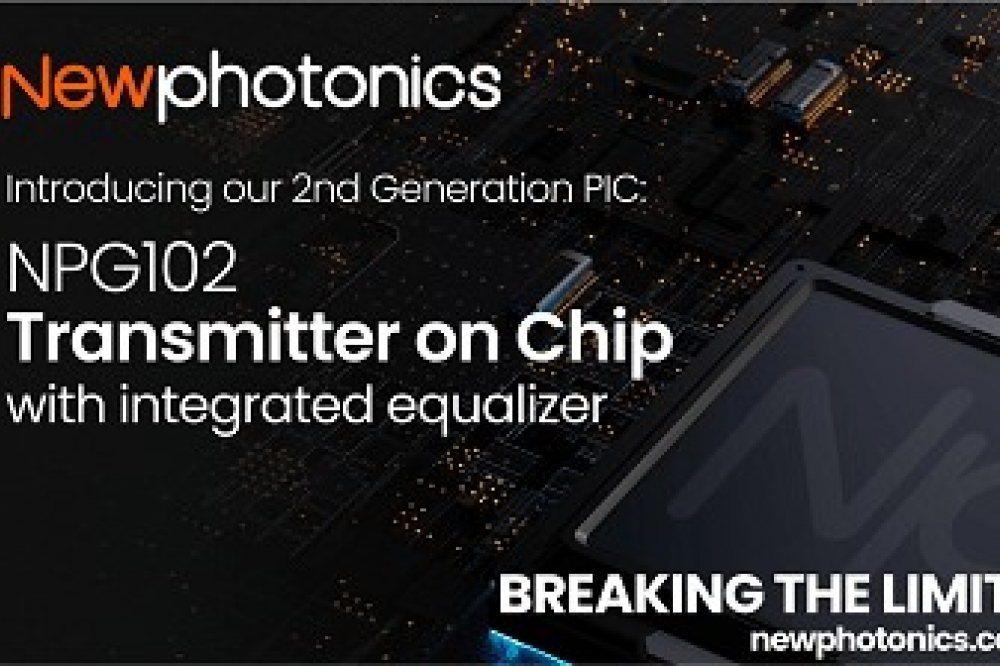NewPhotonics introduces PIC with integrated optical equaliser

The company says its transmitter-optimised chip offers breakthrough minimal latency and power performance for linear receive optics and linear drive pluggable optics applications in the datacentre
NewPhotonics has introduced its NPG102 second-generation photonic integrated circuit with integrated optical equaliser, which the company says delivers reduced complexity and enhanced link performance for high-throughput optical interconnects. According to NewPhotonics, the enhanced transmitter-optimised chip offers breakthrough minimal latency and power performance at 800G and 1.6T for linear receive optics (LRO) and linear drive pluggable optics (LPO) applications in the datacentre.
As AI workloads accelerate the demand for low latency, high speed and power-efficient optical connectivity, LPO benchmarks in power and latency are evolving at consistent link performance required for multivendor interoperability.
The NewPhotonics NPG102 PIC is an octal and quad parallel single mode (PSM) transmitter for 8x and 4x 200G PAM-4 transceivers. The silicon photonics chips monolithically integrate elements of the transmitter including laser, modulator and an optical equaliser. The company says that the best-in-class transmitter design simplifies system integration and improves OEM manufacturing yield and transceiver reliability.
According to NewPhotonics, the optical equaliser located closest to TP2 facilitates signal dispersion compensation that enables consistent optical link performance and interoperability, while optical signal processing enables more than 1000x lower latency resulting in lower system pJ/bit.
“AI continues to drive datacentre processing needs of large language models (LLMs) ramping requirements for low power and low latency fibre connectivity,” said Doron Tal, SVP and GM of Optical Connectivity at NewPhotonics. “The differentiating utility of linear drive and optical equalisation technology enables LPO modules to operate in all ports with different insertion losses ensuring interoperability between different host vendors and enabling a low power, low latency DSP-free alternative.”



































